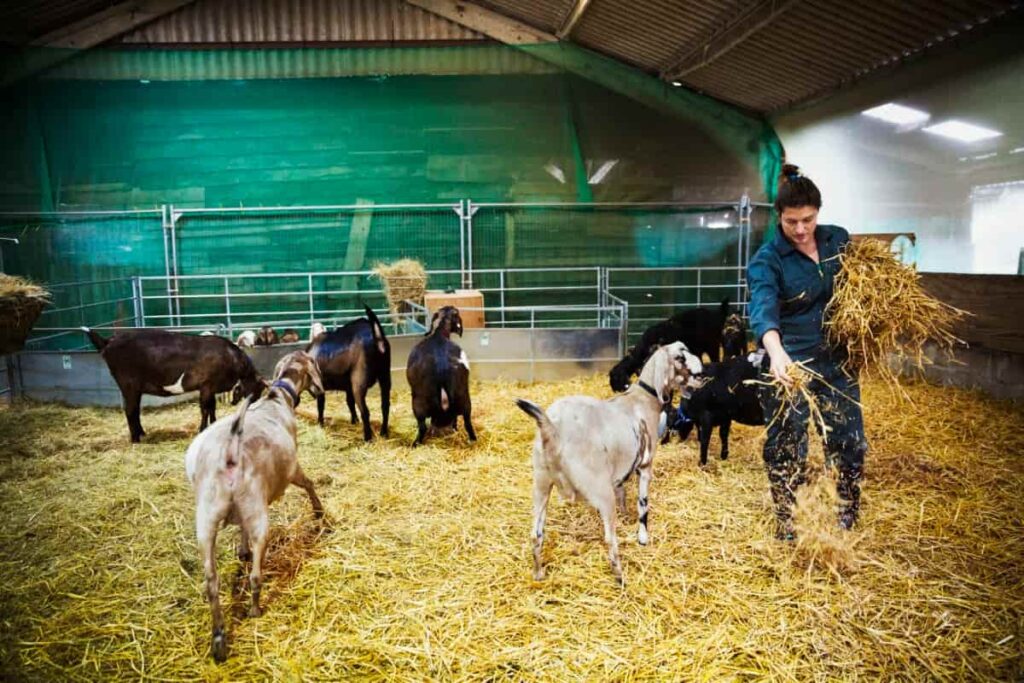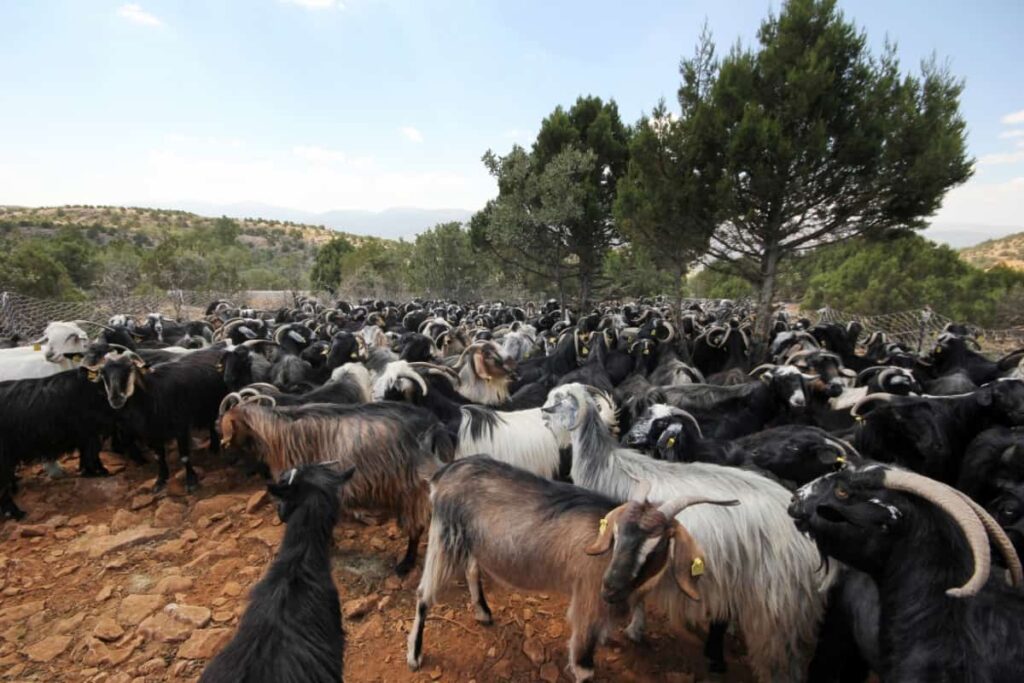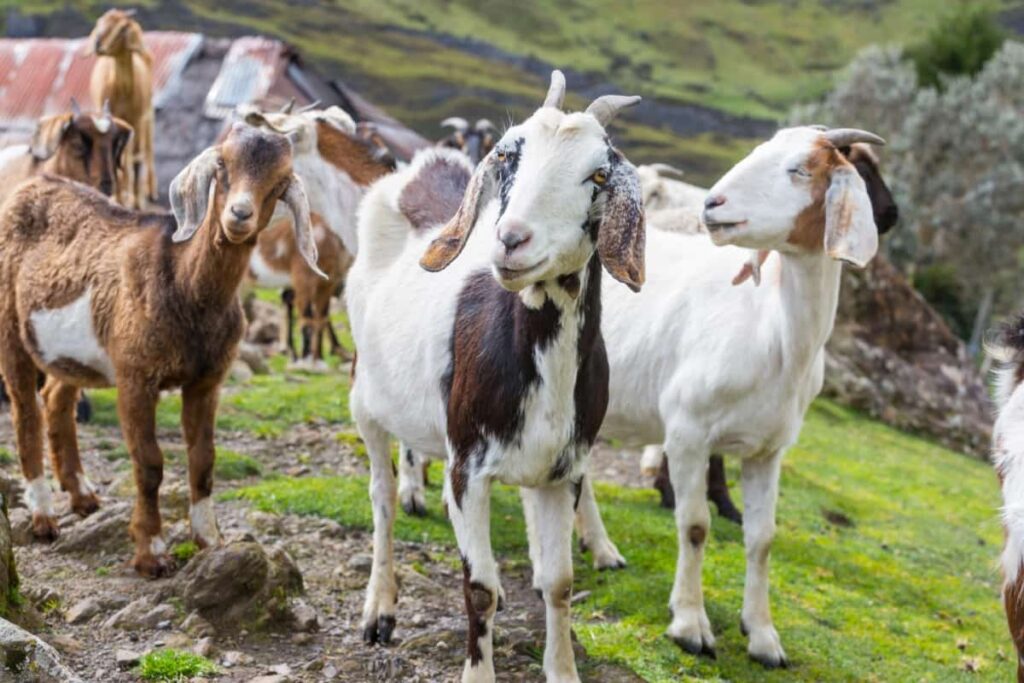Spring Transition in goats refers to the period when these animals adjust to the changing climate and conditions that come with the arrival of spring. Like humans, goats experience changes in their environment during this time, such as fluctuating temperatures and increased rainfall. This transition can significantly impact their physical health and overall well-being.

10 Spring Transition Tips to Keep Your Goats Happy
Importance of Spring Transition for Goats
During spring transition, goats may undergo hormonal changes affecting their reproductive cycles. Goat owners need to be aware of these shifts and make necessary adjustments to ensure the happiness and health of their animals. In addition to weather fluctuations, spring transition can change vegetation availability. Spring also increases parasite activity, so adjusting your parasite control measures accordingly becomes vital for preventing infestations among your herd. Neglecting this crucial period can lead to stress, illness, or even death among your herd.
Preparing Your Goat’s Diet for the Spring Season
Firstly, assess your goat’s body condition. Adjust their feed accordingly, increasing or decreasing portions as needed. Remember that pregnant or nursing will have different nutritional requirements than non-breeding animals. Next, focus on providing fresh and quality forage options. Take advantage of the new growth in pastures and offer your goats access to browse on tender leaves and shoots.
This will provide them with vitamins and minerals and stimulate their digestive system. Supplementing with grain may be necessary if pasture alone doesn’t meet all their dietary needs. However, be cautious not to overfeed grains as it can affect health issues such as bloat or metabolic disorders. Consider adding mineral supplements specifically formulated for goats into their diet plan.
Providing Adequate Shelter and Protection During Spring Weather Changes
Spring brings unpredictable weather changes, and as a responsible goat owner, it’s crucial to provide your goats with adequate shelter and protection during this transitional period. The sudden shifts in temperature can leave them vulnerable to cold drafts or overheating if not properly cared for.
In case you missed it: How to Build a Cheap Goat Fence on Your Budget: DYI Tips

Ensure your goat housing is well-insulated to shield them from the chilly winds that may still linger in early spring. Ensure no leaks or gaps could allow rainwater to seep inside their shelter. A dry environment is essential for their well-being. It’s also important to monitor the humidity levels inside the shelter. Excessive moisture can lead to respiratory issues in goats. Proper ventilation will prevent dampness from building up and keep the air fresh.
Ensuring Proper Hydration for Your Goats in the Transition Period
Proper hydration is important for the health and well-being of your goats, especially during the transition period from winter to spring. As the weather warms up, it’s important to ensure that goats can always access clean and fresh water. During this time of year, goats tend to increase their activity levels and may spend more time grazing in search of new growth. This increased physical goat activity can lead to higher water requirements. Make sure you provide plenty of clean water sources throughout their grazing areas, as well as in their sheltered areas.
Managing Parasite Control during the Spring Season
Maintain clean and sanitary living conditions for your goats. Regularly clean stalls, remove manure from pastures, and rotate grazing areas frequently. This helps break the lifecycle of parasites by reducing their exposure to fresh pasture. Additionally, consider implementing natural remedies alongside conventional treatments. Herbal supplements such as garlic and diatomaceous earth can act as effective deterrents against parasites without harmful side effects.
Adjusting Your Goat’s Exercise Routine for Spring
Start by gradually increasing the duration and intensity of outdoor activities for your goats. Allow them ample time to roam freely in a secure fenced area. This will not only provide mental stimulation but also help build muscle strength. Introducing new toys or obstacles in their play area can further enhance their physical activity levels. Consider setting up ramps, logs, or even a simple obstacle course that will challenge their agility and coordination. Remember that each goat has its exercise preferences and limits. Observe how they respond to different activities and adjust accordingly.
Monitoring and Maintaining Your Goat’s Hoof Health in Spring
Regularly inspecting your goat’s hooves is essential to catch any issues before they worsen. Look for signs of infection, like a foul odor or discharge and overgrown or cracked hooves. If you observe any abnormalities, consult a veterinarian or an experienced hoof trimmer for proper diagnosis and treatment.
In case you missed it: Why is CDT Vaccine Important for Goats: Benefits and Role

Maintaining hygiene in the barn or shelter area is also important to prevent hoof-related diseases. Proper trimming of hooves should be done regularly throughout the year but requires extra attention during the spring transition. Trimming helps maintain proper balance, prevents excessive pressure on certain hoof parts, and reduces the risk of injuries.
Introducing New Grazing Areas Safely in the Springtime
When expanding your goat’s grazing area, offer small portions of fresh grass or browse daily. This allows their digestive systems to adjust slowly to the new vegetation. Avoid sudden changes in diet as it can lead to health issues. It’s also crucial to consider the quality of the new grazing area. Before allowing your goats access, ensure no toxic plants or harmful substances are present.
Remove potential hazards from the designated space, such as sharp objects or poisonous plants. Remember that introducing new grazing areas is not just about providing fresh food; it also offers mental stimulation and exercise opportunities for your goats. Please encourage goats to explore their surroundings and discover different plant species under supervision.
Recognizing and Addressing Seasonal Allergies in Goats
It’s important to be aware of the common signs of seasonal allergies in goats. These may include excessive itching, scratching, sneezing, coughing, watery eyes, nasal discharge, or skin irritations such as hives or rashes. If you notice any of these symptoms in your goats during the springtime, it’s essential to consult with a veterinarian.
Once you have identified that your goat suffers from seasonal allergies, you can address and alleviate their symptoms in several ways. One approach is to minimize exposure to allergens by keeping your goat away from known triggers, such as pollen-heavy areas or certain plants that may cause allergic reactions. Regular grooming practices such as brushing your goat’s coat frequently can help remove potential allergens like pollen or dust particles that may trigger an allergic response.
Monitoring Your Goat’s Overall Health and Well-being During Spring Transition
By closely monitoring your goats during this transition period, you can ensure they stay happy and healthy. Regular check-ups are essential to catch any potential health issues early on. Your veterinarian can guide you on vaccinations, parasite control measures, and general care for your goats. Maintaining a balanced diet is vital for your goat’s well-being throughout spring.
Alongside proper nutrition and healthcare, pay attention to seasonal allergies that may affect your goats during the springtime. Goats are curious creatures who thrive when given opportunities for exploration and playtime. Please provide them with engaging toys or structures within their shelter area to promote active behavior during this transitional period.
Frequently Asked Questions on Spring Transition in Goats
When Should I Start Transitioning My Goats to Spring?
Timing is crucial when transitioning your goats from winter to spring. As the weather gets milder and the days become longer, it’s a good sign that it’s time for the transition. Typically, you’ll want to change their diet and environment about two weeks before the first day of spring.
Are There Any Specific Vaccinations I Should Give My Goats in Spring?
Consult with your veterinarian about necessary vaccinations based on local disease risks in your area. Common vaccines include tetanus, clostridiums (CDT), and respiratory diseases like pneumonia.
How Often Should I Clean Out My Goat’s Shelter During Spring?
Regularly cleaning the goat shelter helps maintain hygiene and prevent manure buildup, which attracts flies and contributes to health issues like flystrike. Aim to clean out the shelter at least once a week.
In case you missed it: 9 Best Plants for Goats and a Few to Avoid

Conclusion
Spring transition is a crucial time for goats, as it marks the shift from the winter season to the warmer and more vibrant spring season. This period of change is important for their overall health and well-being. During the spring transition, goats undergo various physiological changes that can impact their dietary needs, exercise routine, parasite control, and hoof health. Goat owners must understand these changes and take appropriate measures to stay happy and healthy throughout this transition.
- Types of Grass Growing for Goat Farm
- How to Train Goats for Milking: A Beginners Guide
- Goat Milking Practices and Equipment: A Beginner’s Guide
- Goat Farming for Fiber: Producing Mohair and Cashmere
- Maximizing Goat Milk Production: Tips for Dairy Goat Farmers
- Goat Farming as a Family Business: Strategies for Success
- Profitable Kenya Goat Breeds for Commercial Dairy and Meat Business
- Unlock the Secrets of Oberhasli Goat: Discover Raising and Management Practices
- Ultimate Guide to Myotonic Goats: Explore Profile to Raising